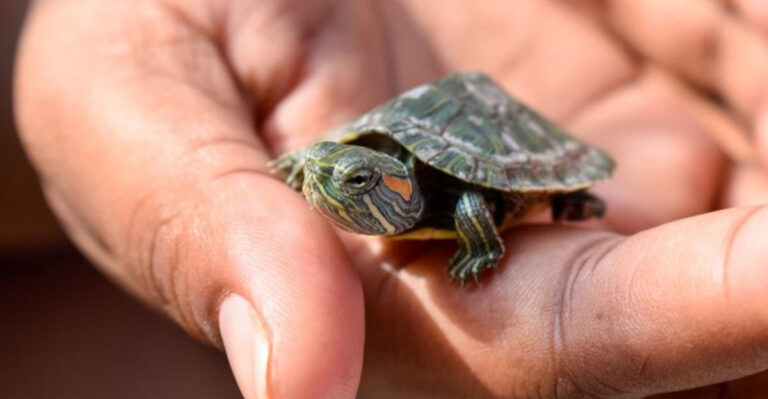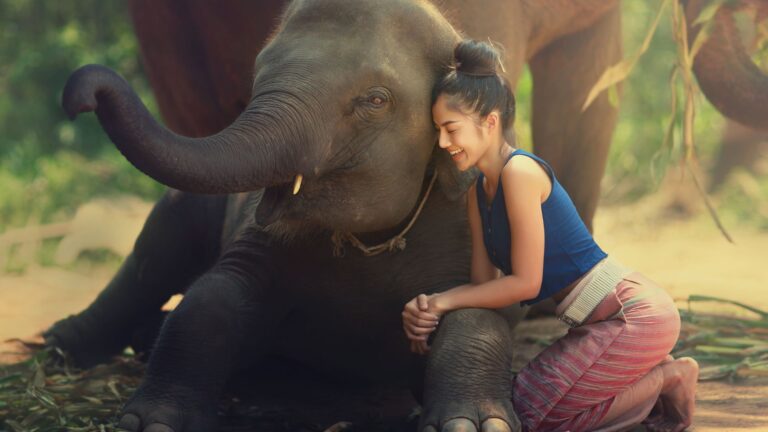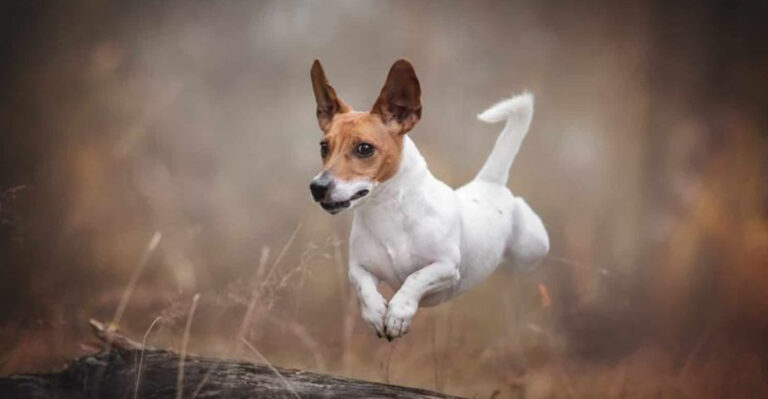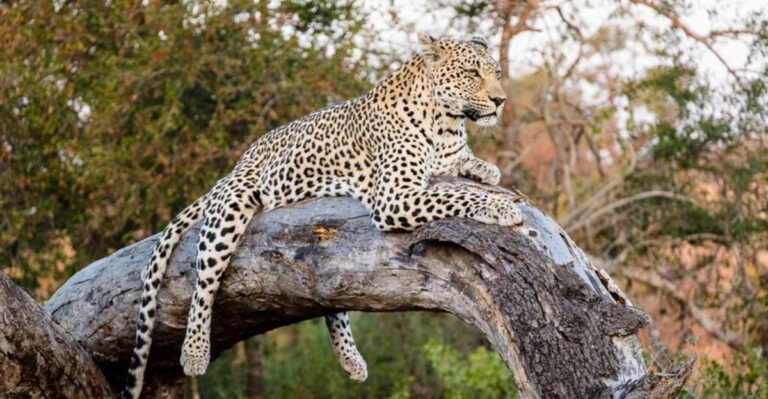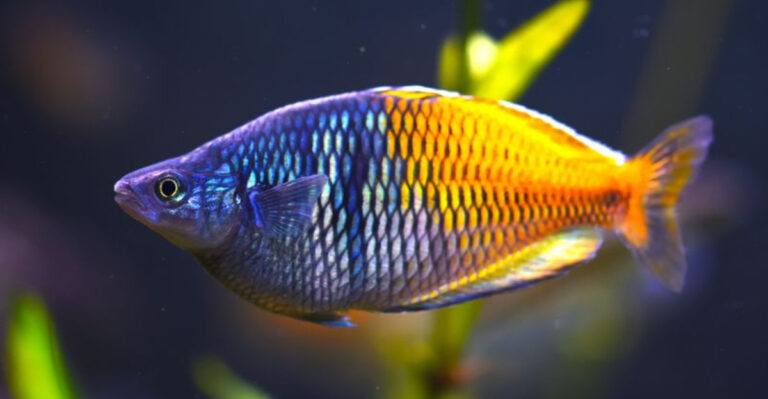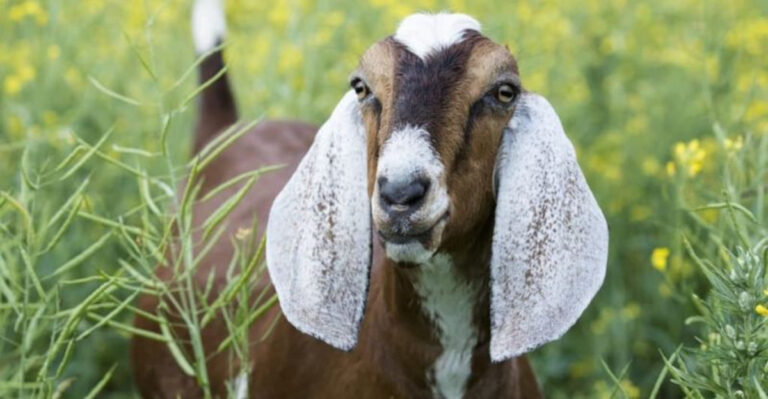Where To See Moose In Alaska: 14 Best Viewing Spots
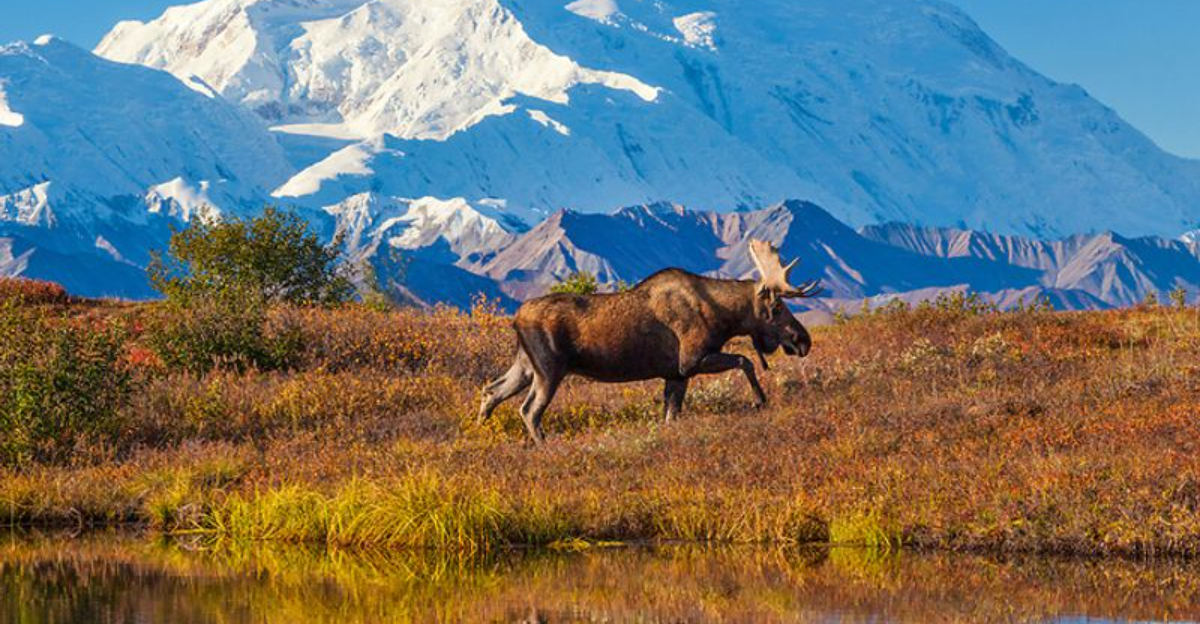
Alaska’s wilderness offers incredible opportunities to spot moose – the largest members of the deer family. These magnificent creatures, standing up to 7 feet tall at the shoulder, roam freely throughout the state’s diverse landscapes.
Whether you’re an avid wildlife photographer or simply love animal watching, these 14 locations provide your best chances to witness these majestic animals in their natural habitat.
1. Denali National Park
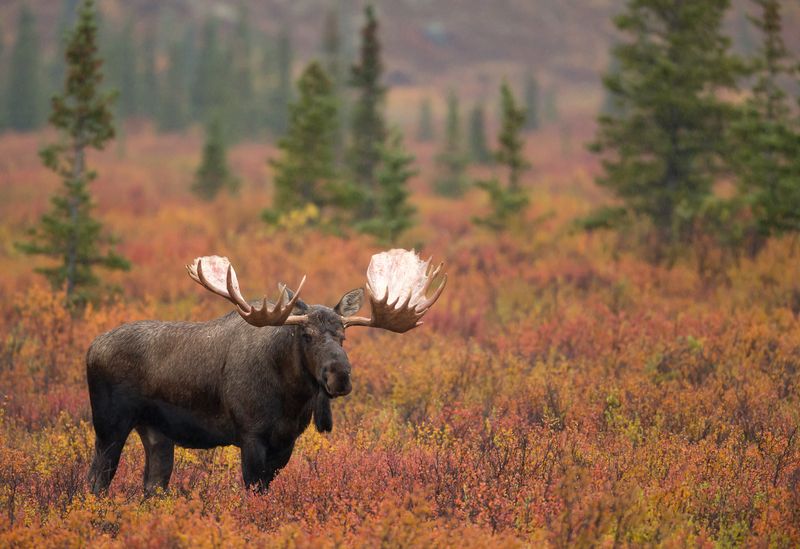
Alaska’s crown jewel offers prime moose habitat across its six million acres. Moose frequently wander near Wonder Lake and along the park road, especially during early morning hours.
Rangers can point you toward recent sightings, making guided tours particularly valuable. September brings rutting season when bull moose are most active and visible.
2. Kenai Peninsula
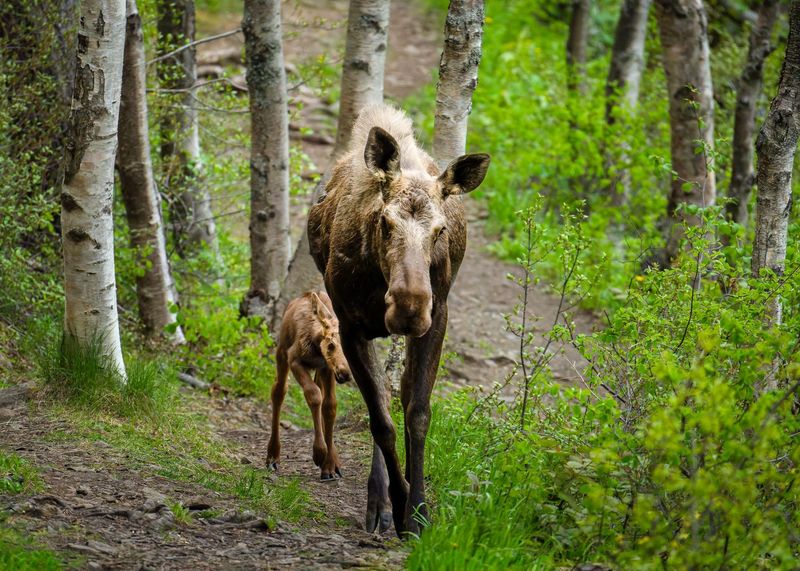
The peninsula’s mixture of forests, wetlands, and meadows creates ideal moose territory. Drive along Sterling Highway during dawn or dusk when these massive mammals are most active.
Local hotspots include the Kenai National Wildlife Refuge and Skilak Lake Road. Winter brings moose down from higher elevations, increasing your chances of roadside sightings.
3. Anchorage Coastal Wildlife Refuge
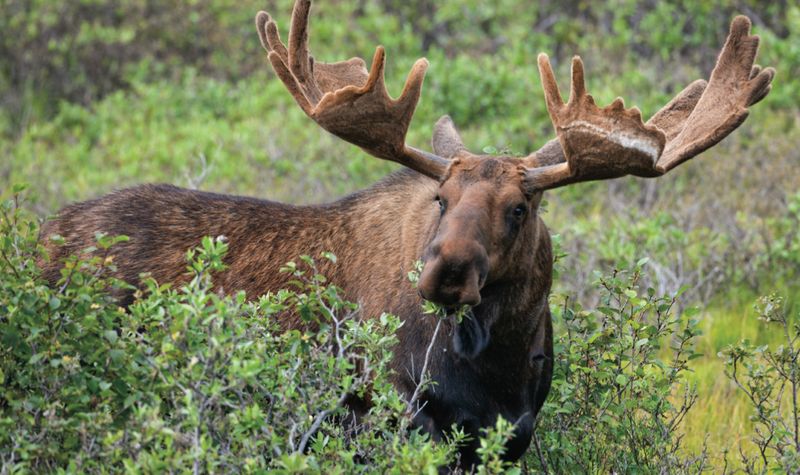
Surprisingly, Alaska’s largest city offers excellent moose viewing right within its boundaries. The refuge’s 16 miles of coastline attracts moose year-round, particularly in winter when they seek shelter.
Potter Marsh boardwalk provides safe observation points. Remember to maintain proper distance – urban moose are still wild animals!
4. Knik River
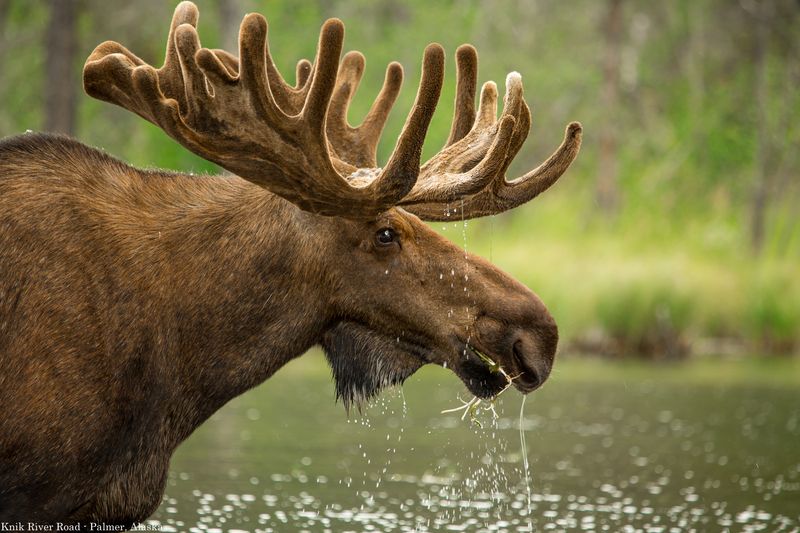
Just an hour from Anchorage, this river valley boasts a thriving moose population. The lush vegetation along the riverbanks provides essential food, drawing moose throughout the year.
Knik River Road offers numerous pullouts for wildlife watching. For a unique perspective, consider booking a jet boat tour that navigates the shallow waters where moose often feed.
5. Wrangell-St. Elias National Park
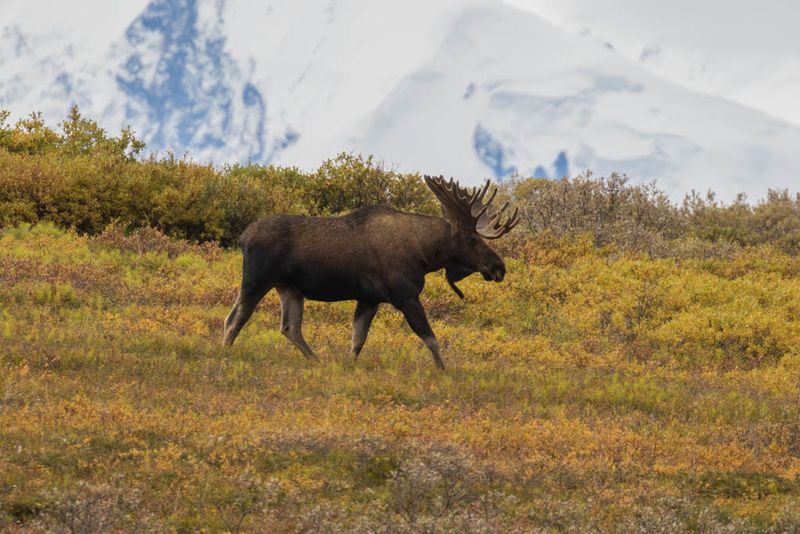
America’s largest national park harbors countless moose across its vast wilderness. The Nabesna Road corridor offers reliable sightings, especially near wetland areas.
Ranger-led programs often include tips for spotting wildlife. The park’s remote nature means moose here exhibit more natural behaviors, untouched by urban influences.
6. Matanuska-Susitna Valley
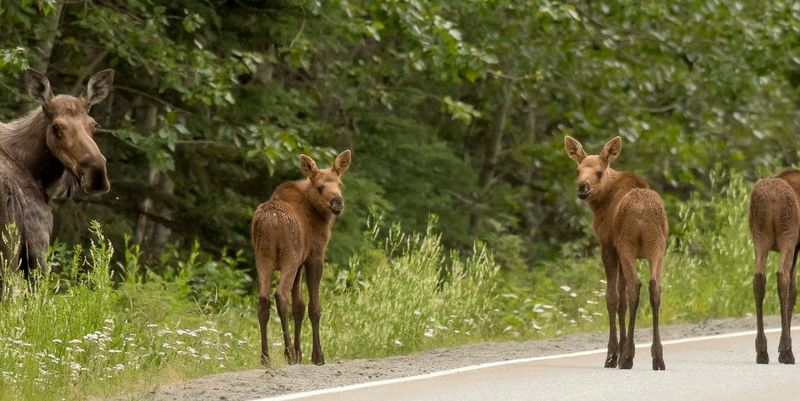
Locals call this region “moose country” for good reason. The valley’s patchwork of farms, forests and wetlands supports one of Alaska’s densest moose populations.
Palmer Hay Flats State Game Refuge offers excellent viewing opportunities. Winter brings these giants into neighborhoods as they seek easier travel along plowed roads and trails.
7. Hatcher Pass
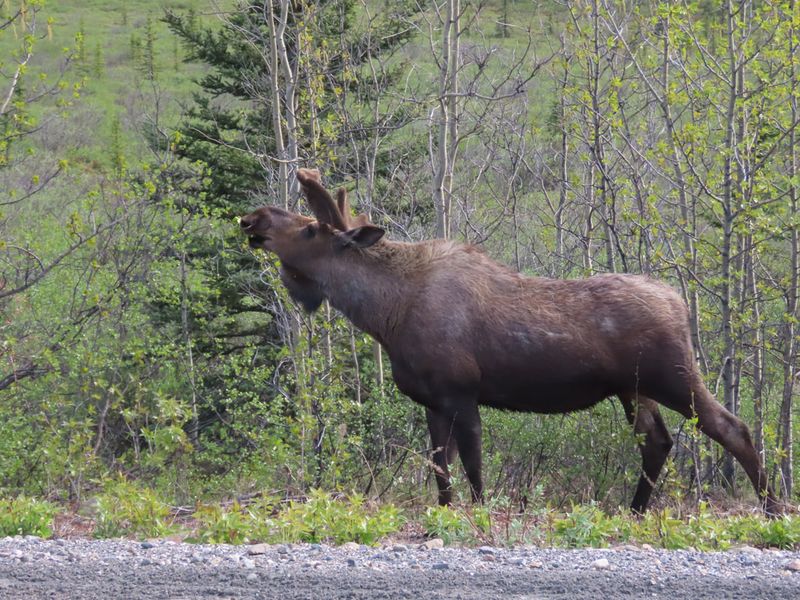
This alpine wonderland transforms with seasons, each offering unique moose encounters. Summer brings moose to high meadows where they feast on abundant vegetation.
The road to Independence Mine provides excellent vantage points. Autumn colors create spectacular backdrops for wildlife photography as moose prepare for winter’s challenges.
8. Glacier Bay National Park
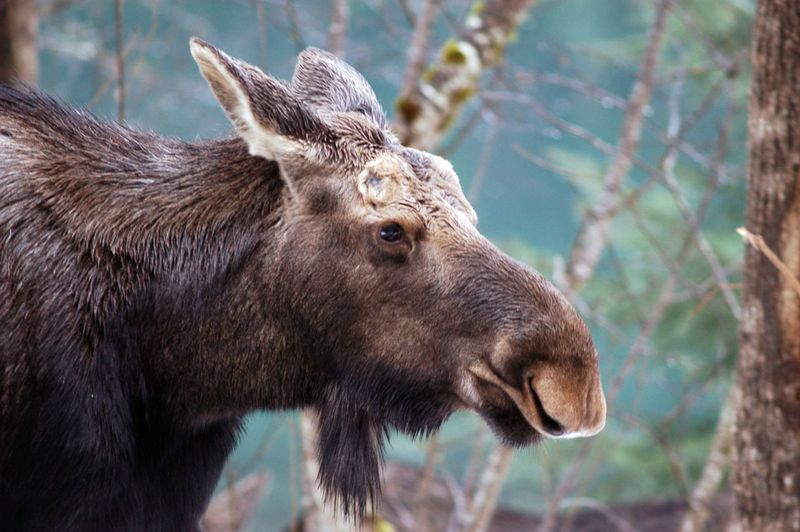
While famous for marine wildlife, this coastal gem harbors healthy moose populations in its forested areas. Bartlett Cove offers reliable sightings where forest meets shoreline.
Kayaking the park’s calm waters can yield unexpected moose encounters. Morning boat tours frequently spot these giants browsing along the water’s edge before temperatures rise.
9. Chugach State Park
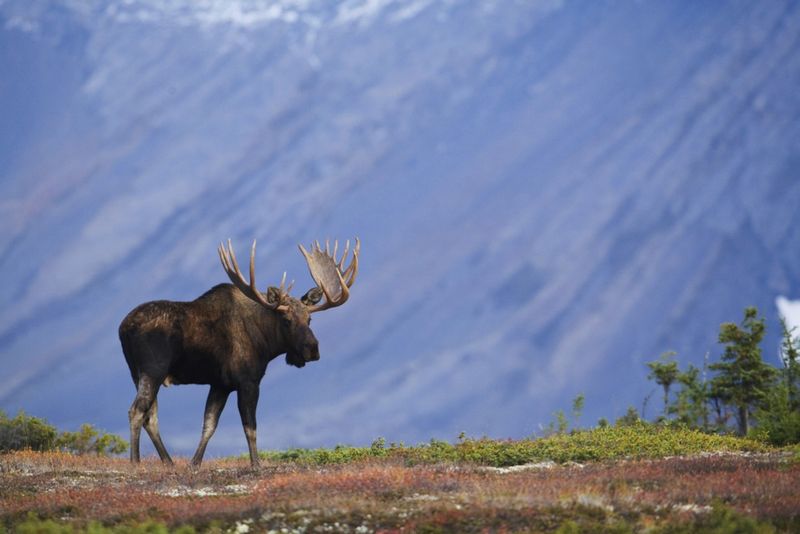
Bordering Anchorage, this accessible wilderness is home to hundreds of moose. Eagle River Nature Center trails offer some of the best viewing opportunities, especially in early morning.
Glen Alps area provides panoramic vistas where moose can be spotted below. Winter snowshoe treks along Powerline Pass often yield surprising close encounters with these magnificent animals.
10. Talkeetna
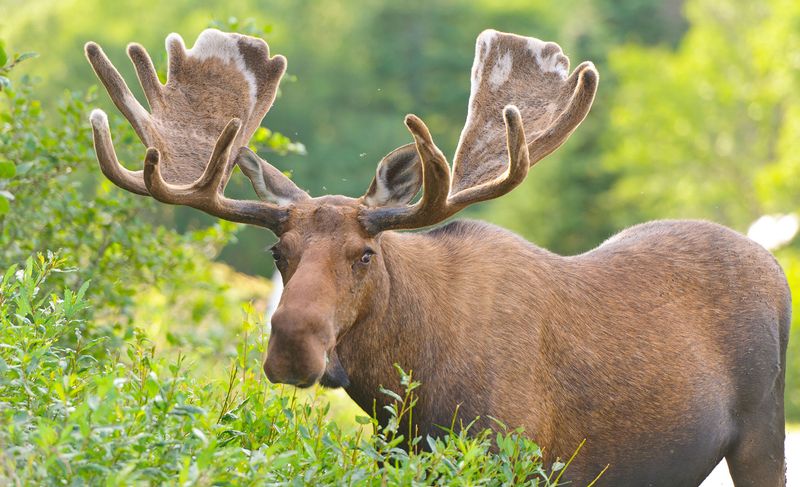
This charming historic town serves as both gateway to Denali and moose-watching haven. The confluence of three rivers creates prime habitat where moose gather to feed and drink.
Local pilots offer “flightseeing” tours that reveal moose from above. The town’s remote location means fewer visitors, allowing for more natural wildlife behaviors.
11. Seward Highway
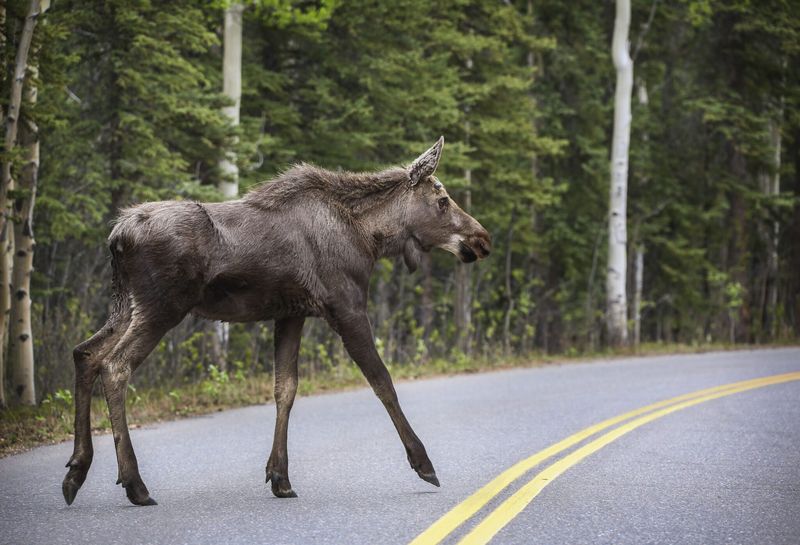
This National Scenic Byway doubles as a premier wildlife corridor. Moose regularly cross between the mountains and Turnagain Arm, especially in winter when seeking lower elevations.
Bird Creek and Portage Valley are particularly productive viewing areas. Keep binoculars handy – what appears to be a distant stump often transforms into a browsing moose upon closer inspection!
12. Tok
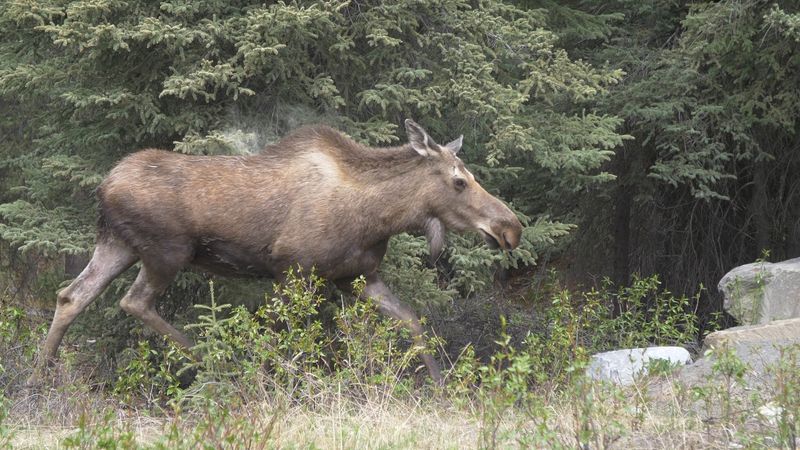
This small community marks the junction of major highways and moose migration routes. The surrounding boreal forest provides perfect cover and abundant food for these massive browsers.
Moose often appear along the Tok Cut-Off Road at dawn. Local businesses display “moose sighting boards” where travelers share recent encounters, helping you target your search.
13. Yukon Flats National Wildlife Refuge
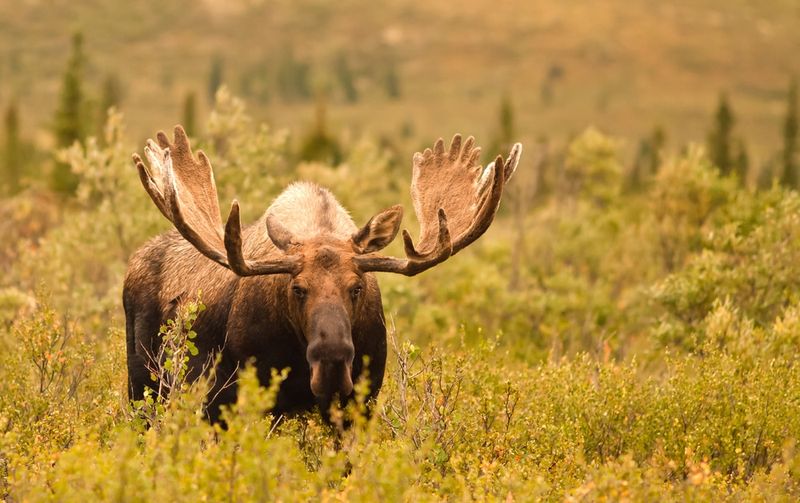
This remote wilderness harbors some of Alaska’s largest moose. The refuge’s mosaic of wetlands, forests and meadows creates ideal habitat across its 8.6 million acres.
Accessible primarily by bush plane, the refuge offers truly wild encounters. Fall brings spectacular opportunities to witness bull moose with massive antlers during rutting season.
14. Homer
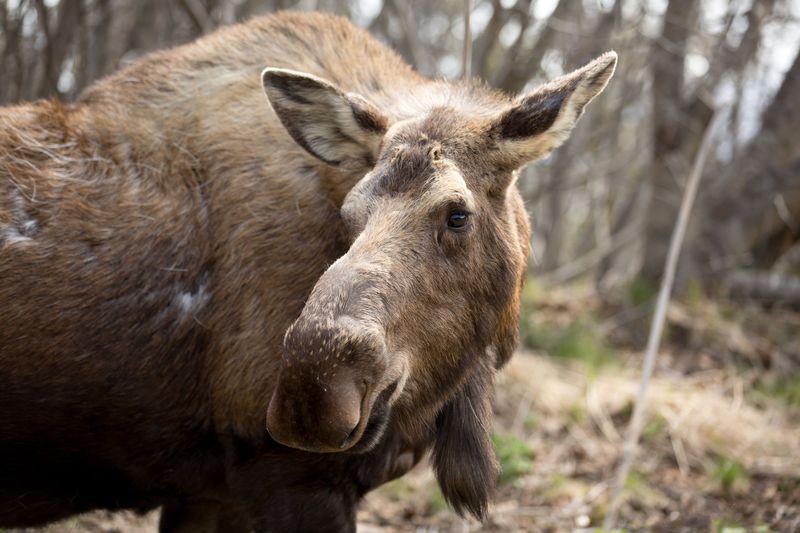
Known as the “Halibut Capital,” Homer surprisingly offers excellent moose viewing. The Anchor River flats attract moose year-round, especially in winter when deep snow drives them to lower elevations.
Kachemak Bay State Park trails often yield sightings. For a unique experience, book a water taxi across the bay where moose are frequently spotted along the shoreline.

